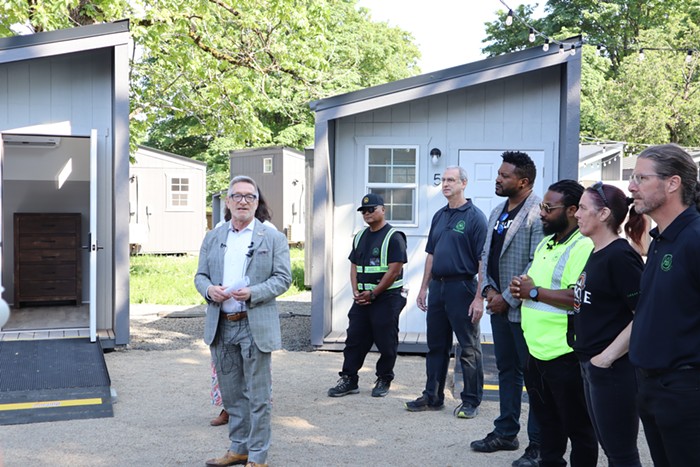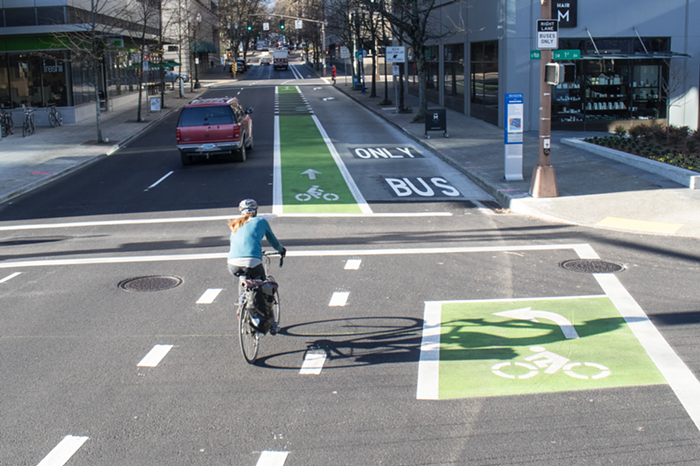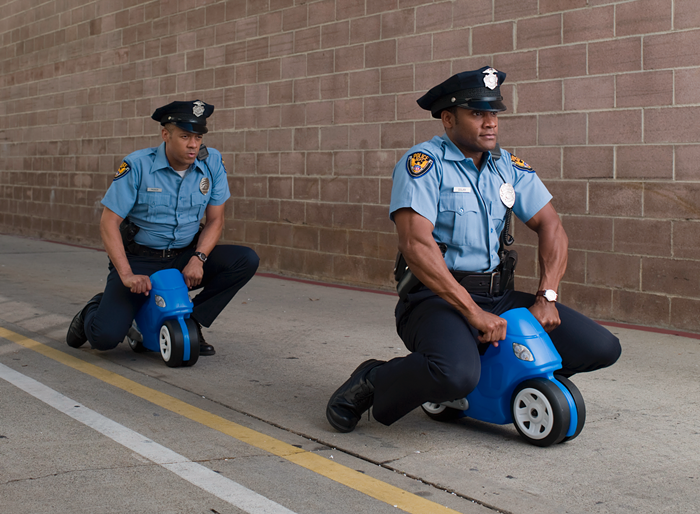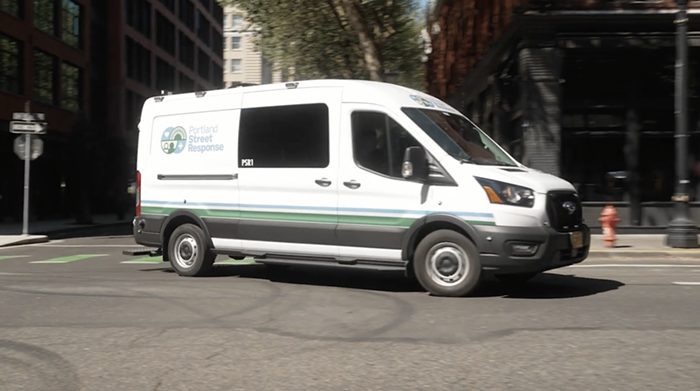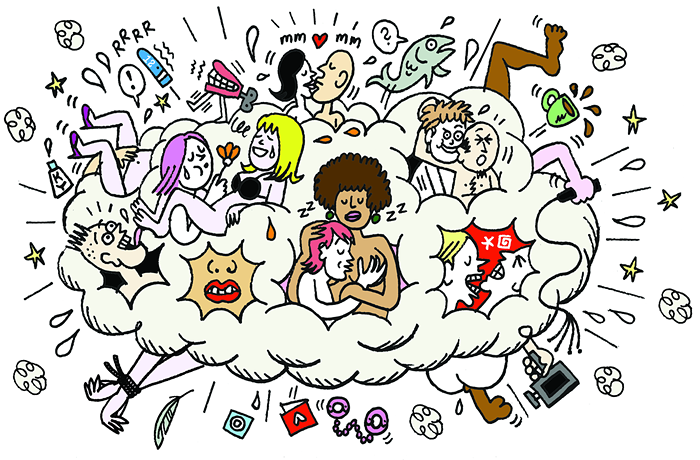THE STARS. Samir Khurshid says they're where we came from. That they're our destiny: to become the very forge from which our elements are smelted. It's one of the many glimmering philosophical messages hidden in his latest large-scale oil painting—a painting exploring the fate and survival of humanity—on view in the basement hallways of the Falcon Art Community, where Khurshid lives. Khurshid was born and raised in Iraq; during his mandatory three years in the Iraqi military service, he served as Saddam Hussein's portrait artist. He moved to the United States in 2010 from Turkey, where he lived in exile after his military service in Iraq. Perhaps it's Khurshid's cerebral nature, perhaps it's his contentious relationship with the idea of home, that has led to such accepting and hopeful work. Maybe it's just that he finally has an opportunity to create freely, from his own mind. A mind looking from and toward the stars.
THE MILITARY PAINTER: "When I was doing my military service, people were asking each soldier what your talents are: 'Who can paint?' 'Who can cut hair?' 'Who can clean?' So when they were asking me, I said, 'I can paint.' They said, 'Can you cut some hair?' I said, 'Yes.' 'Can you paint?' I said, 'Yes.' 'Can you fix things?' I said, 'Yes.' They said, 'Can you really do all these things?' I said, 'Yes.' Then they told me, 'You are going to paint Saddam's paintings for us, but if you can't do this, you are not going to be in good hands. If you can't paint well,' they said, 'you are not going to stay here. Maybe we will send you to mountains to do more difficult stuff.'"
They chose me to make Saddam's paintings, and then I went home, got my materials, and came back and I started to paint his paintings. And then they liked it so much, and they said, 'Okay, you are the one and you will do this job for us,' and they started to send me to other cities as well, to paint his paintings."
NO LOOSE ENDS: "If you are working around [Saddam] or with him and you witness some secrets—right, like, you learn some things you are not supposed to learn—and they cannot take that risk, they kill you. That's why everyone was so scared to work with him. I was just painting his paintings from afar; I wasn't so close to him, thank God. It's like mafia. It's like terrorism. Once you are there, your life is in danger, because Saddam was so scared. He knew that there are so many people who don't like him at all."
Like, you know, some people who live in the mountains, that area in Iraq, especially, they didn't like him, so basically he just didn't want to take any chances. He would just prefer to kill those people if they witnessed anything he'd done. If they don't kill you, if you are lucky, they just follow you, like, all the time, to see what you are going to do."
FEAR BEFORE SKILL: "Maybe because I was so scared of him, maybe that's why I became a good artist. Because if you don't paint the painting well, you know, if you make any mistakes, basically you are either going to die, or will be in a horrible situation. This really requires some braveness. You really have to be so brave for this, because it's such a difficult job. Because basically this is what you are going to do: you are going to take Saddam's head and you are going to draw this or paint this on a horse or a tank or in this war scene, you have to be a good artist in order to do this. That's how I felt."
SADDAM IS HERE: "[Over my three years of military service, I painted] 380 or more [portraits of Saddam Hussein], I don't even know. The buildings where you do your military service, commanders and generals would come and they would look at those paintings. When they were celebrating—if it was someone's birthday, or if they won when they are in the war—they would have special exhibitions for them. So people would buy paintings as gifts, but other than that they would just show them in those military buildings. Generals or whoever was buying the paintings would either give them as a gift to Saddam or to other people or for themselves. Because there is kind of like a rule. Basically the rule is, in every house, there must be one of Saddam's paintings. In restaurants. Basically everywhere in Iraq. The first page of each book. In books, in homes, at restaurants, in government buildings, on money. He tried to remind us all the time that he was there."
THE EXILE YEARS: "I left Iraq in 2006. After I worked with American soldiers in Iraq [following my service under Saddam], bin Laden's people—his men—started to threaten me, and that was the time I left Iraq. Because I was painting American soldiers' paintings, like, their portraits, so I was going to their homes—I was working with them—they were thinking I was an agent. Basically they were killing everyone who was working with Americans at that time."
BREAKING THE EGG: "[Eggs are a central theme in my paintings because] I got out from an egg. Think Iraq. That was an egg. I was living in an egg. Everything that was happening around me; I was in that egg. We couldn't see the outside, but the people who were outside could see us. Because all we saw—from the internet, on TV—as controlled by Saddam, that was his media. And basically, that's what we could see, but other people outside of Iraq could see us, what was really happening in Iraq. Believe me, when the Americans came to Iraq—the soldiers—we would touch them to see if they were real. Because, you know, we didn't see anything. We were in that egg. Think an egg. I can explain it like this: When America hits the egg, there is a little crack, and we started to get out like a baby chicken. Slowly and slowly we started to get out."
See portlandmercury.com/visualart for more of our interview with Samir Khurshid

